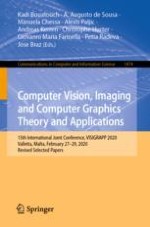2022 | Buch
Computer Vision, Imaging and Computer Graphics Theory and Applications
15th International Joint Conference, VISIGRAPP 2020 Valletta, Malta, February 27–29, 2020, Revised Selected Papers
herausgegeben von: Kadi Bouatouch, A. Augusto de Sousa, Manuela Chessa, Alexis Paljic, Andreas Kerren, Christophe Hurter, Giovanni Maria Farinella, Petia Radeva, Jose Braz
Verlag: Springer International Publishing
Buchreihe : Communications in Computer and Information Science
